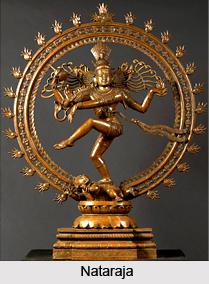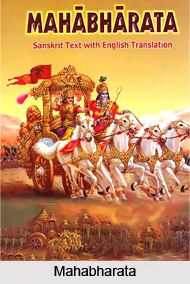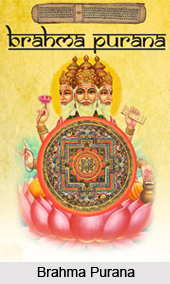 The history of Yoga Asanas can be traced from Vedic scripture to the modern period, throughout which they underwent successive refinements. Yoga as a discipline was detailed first by Patanjali (BCE 600) in his Yoga Sutras, the first systematized treatise on Yogic theory and praxis. However, a physical culture existed prior to this, and Patanjali`s achievement lies in collating all these diverse traditions. The textual evidence indicates that Yoga Asanas have evolved concomitantly with the general progress of Indian thought.
The history of Yoga Asanas can be traced from Vedic scripture to the modern period, throughout which they underwent successive refinements. Yoga as a discipline was detailed first by Patanjali (BCE 600) in his Yoga Sutras, the first systematized treatise on Yogic theory and praxis. However, a physical culture existed prior to this, and Patanjali`s achievement lies in collating all these diverse traditions. The textual evidence indicates that Yoga Asanas have evolved concomitantly with the general progress of Indian thought.
Yoga Asanas were first mentioned in the Atharva Veda Samhita (1500 BCE), which uses the term asana in a specifically Yogic context. The Sanskrit word `asana` derives from the verbal root meaning "to sit" or `to be present` and in the context of the Yoga tradition `asanas` means `to be established in a particular posture`, and the textual context indicates the latter meaning.
There are various references in the Vedas, Brahmanas and Upanishads which indicate that the practices must have already been in existence prior to their being noted in these texts. Several Yogis scrutinized their relative merits by analytical comparisons and thus formulated a complete course of posture training. A few early postures, mostly meditative, in turn passed through a series of modifications before the whole system of physical education was finally perfected by the early Hatha Yogis.
The first major treatise on Yoga, the Yoga Sutras (600 BC), was written by Patanjali. The text is a seminal work in Yoga practice and there are very few other texts devoted to the subject. Patanjali is observably influenced by Buddhism, which had a significant number of adherents then, and his discussion of asanas and the rest of Yogic practice is pragmatic and avoids discussing the spiritual aspects of Yoga.
 Early works like the Atharva Veda Samhita and the Patanajali Yoga Sutra mentioned Asanas in general as postures conducive to spiritual development. The Mahabharata (400 BC) mentions two specific asanas, without description: Mandukasana and Virasana. Although Patanjali does not mention specific asanas, it is the first text to identify right posture or asanas as part of Yogic discipline. Indeed, Asanas in the Yoga Sutras of Patanjali form the third limb of the eightfold Ashtanga Yoga.
Early works like the Atharva Veda Samhita and the Patanajali Yoga Sutra mentioned Asanas in general as postures conducive to spiritual development. The Mahabharata (400 BC) mentions two specific asanas, without description: Mandukasana and Virasana. Although Patanjali does not mention specific asanas, it is the first text to identify right posture or asanas as part of Yogic discipline. Indeed, Asanas in the Yoga Sutras of Patanjali form the third limb of the eightfold Ashtanga Yoga.
Later Yoga treatises like the Hatha Yoga Pradipika and the Yoga Upanishads provided detailed descriptions of several specific Yoga Asanas. Modern works largely refer to these texts while detailing Asanas.
Yoga Yajnvalkya, written by the legendary sage Yajnavalkya and compiled around 200 BC, was the first text to provide descriptions of asanas that are performed even today. The later Vyaasa Bhasya also provided descriptions and set out a philosophy of yoga practice.
Asanas continued to form an integral part of Yoga practice. The Indian Puranas (300 CE to 1000 CE) referred frequently to several Asanas, notably the Ardha, Padma and Swastika Asanas. Some Puranas, such as the Visnudharmottara Purana and the Brahma Purana, described meditative Asanas like Swastika Asana.
This period led to the first major innovation in the philosophy of yogic practice, initiated by the legendary sage Gorakshanath, author of the Goraksha Padatthi or Samhita, who founded the school of Hatha Yoga along with his guru, Masyendranath.
 Importantly, the Hatha Yogis were also Nath Yogis and were strongly influenced by tantra and mystical offshoots of Buddhism and their descriptions of Asanas were strongly coloured by discussions of Kundalini and other Tantric concepts.
Importantly, the Hatha Yogis were also Nath Yogis and were strongly influenced by tantra and mystical offshoots of Buddhism and their descriptions of Asanas were strongly coloured by discussions of Kundalini and other Tantric concepts.
Hatha Yoga is a highly influential school of yoga, and several asana compendia directly attribute their knowledge to Gorakshanath and regard him as one of the Yoga Siddhas. Most extant yoga texts are clearly derived from the Hatha Yoga Pradipika, a 14th century text that built up on the Goraksha Paddhathi.
The Gorakhsha Samhita, considered the oldest extant text dedicated to Hatha Yoga, describes Padma Asana and Siddha Asana. The Hatha Yoga Pradipika (1400 CE) describes over a dozen Asanas, with information also on how to perform them, and the ideal external conditions for practicing Yoga. The Yoga Upanishads (1400 -1500 CE) used both the Yoga Yajnavalkya and the Hatha Yoga Pradipika as their source.
Contemporary yoga manuals also owe much of their knowledge on asana practice to the efforts of the Hatha Yogins, and still make use of the concepts and ideology of Hatha Yoga and even of Patanajali, whose Ashtanga Yoga is still the doctrinal mode of pursuing yoga as a system of belief and practice.
Trends in the history of Yoga Asanas indicate a symbiotic relationship between Indian spiritualism and the practice of Yoga Asanas: Indian meditation involved a handful of stable postures, upon which Yogins developed a general physical culture indicated by the `cultural asanas`. Also, yoga asanas tended to be described and discussed in light of recent philosophical or spiritual innovations, and were rarely discussed in a theological or philosophical `no man`s land` untouched by other schools of thought. They are thus revealed to be an integral part of Indian philosophy and culture.




















